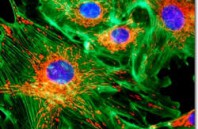Traditionally, the study of diseases at the molecular level has required scientists to extract cells and tissues from animal models and then look for clues in the samples that can determine the mechanisms underlying the disease and driving its progression. According to Chris B. Schaffer, associate professor of biomedical engineering at Cornell University, New York, USA, that is “like a person guessing who is winning a battle based on a single photograph from the warzone.” A better way, Schaffer said, is a method known as multiphoton imaging, by which individual cells can be tracked in living tissue using fluorescent labels and their three-dimensional structures visualized in detail..
Researchers Demonstrate Hyperspectral Imaging for Multiphoton Microscopy


 (585) 768-2513
(585) 768-2513
